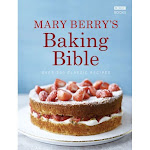 Yum. I can't think of anything better than this for a quick healthy supper in the middle of the week, and so frugal too! This soup is my version of the inimitable Nigella's sweetcorn chowder from Express. I do borrow from (or lean heavily upon) the original, but...dare I say it...think this recipe is nicer! Mind you, it isn't quite so express... But what brain food!
Yum. I can't think of anything better than this for a quick healthy supper in the middle of the week, and so frugal too! This soup is my version of the inimitable Nigella's sweetcorn chowder from Express. I do borrow from (or lean heavily upon) the original, but...dare I say it...think this recipe is nicer! Mind you, it isn't quite so express... But what brain food!Ingredients
- 1 small onion, peeled and finely chopped
- 1 large carrot, peeled and grated
- 2 celery stalks, peeled of the long fibrous threads, and very finely diced
- 2 heads of sweetcorn
- Veg stock
- Splash milk or cream
- Cheese tortillas
- Mature English cheddar
Method
- Heat a tablespoon of oil in a wide-based saucepan with the onion, carrot and celery. Sweat the veg for 10 minutes until they are very soft but not coloured.
- Meanwhile, cut the sweetcorn kernels off the cobs (in a large bowl, hold the corn cob at a low angle and cut down through the base of the kernels with a sharp serrated knife).
- Add the sweetcorn to the vegetables, stir well, and pour over hot vegetable stock to cover by about 1cm.
- Bring the soup to a gentle boil, then turn the heat down to a good simmer and leave to cook for 20 minutes while you unwind a bit and think about which bubble bath to use tonight.
- Once the sweetcorn is nice and tender, take the pan off the heat and leave for 10 mins for the temperature to drop a bit.
- Preheat the oven to 200C/390F.
- After 10 minutes, arrange a handful of tortilla chips per person on a baking tray, grate over as much of the cheese as you want, and pop in the oven. Cook for about 5 minutes - you will smell when they are ready.
- Meanwhile, remove a couple of spoonfuls of sweetcorn kernels from the pan, then tip all the rest into a blender. Blend to a smoothish soup (take out the central lid or your blender will explode like mine did once...) then return to the pan with the reserved vegetables.
- Reheat the soup gently for a few minutes. Add a splash of milk or cream if you think it needs it. It should be sweet and vegetabley. Serve in wide bowls with the cheesy tortillas on top and relax in front of a Nigella DVD.









